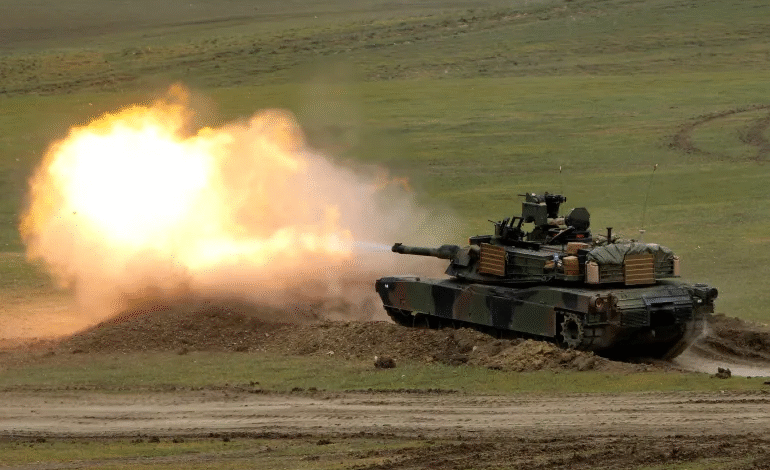U.S. Accelerates Development of the Next-Generation M1A3 Abrams Tank

The U.S. Army has recently announced a significant acceleration in the development of its next-generation main battle tank, the M1A3 Abrams, in response to the rapidly evolving nature of modern warfare—where drone swarms, precision-guided munitions, and advanced cyber-technical integration are reshaping battlefield dynamics.
For years, the Army had been moving cautiously toward upgrading its iconic Abrams platform. However, recent strategic assessments and lessons from contemporary conflicts have pushed the U.S. military to expedite the shift toward a completely redesigned tank rather than incremental upgrades.
Since the early 1990s, the M1A2 Abrams has served as a symbol of U.S. ground dominance. But in 2023, the Army made a pivotal decision: cancel further incremental improvements to the M1A2 in favor of a new, fully re-engineered platform—the M1A3 Abrams.
Originally estimated to require seven years and a budget of $2.9 billion, the project is now moving at an unprecedented pace. According to recent official statements, the first prototype of the M1A3 is expected to be delivered by the end of this year, with soldier-level field testing set to begin in 2026. Limited production could start as early as 2027–2028, significantly ahead of the earlier projection targeting 2030 and beyond.
This shift reflects a broader strategic goal: deliver advanced battlefield capabilities as quickly as possible and rely on real-time operational feedback to refine performance—rather than waiting years to achieve a “perfect” design that risks becoming outdated before deployment.
Lessons From Current Conflicts
The Russia–Ukraine war has highlighted that tanks remain essential assets in ground combat, but it also exposed new vulnerabilities—specifically the threat posed by drones and smart munitions targeting weak points from above. As a result, tank designers now prioritize multi-layered crew protection, reduced detectability, and seamless integration with unmanned aerial systems.
A Lighter, Smarter, More Survivable Abrams
The new M1A3 Abrams reflects these priorities through several key design shifts:
1. Hybrid Diesel-Electric Powertrain
Replacing the current gas turbine engine, the M1A3 will rely on a hybrid diesel-electric system. This change increases fuel efficiency by approximately 40%, extends operational range, and reduces logistical burdens by using widely available diesel fuel and easier-to-maintain commercial components.
2. Reduced Weight
The new design is expected to weigh around 60 tons—seven tons lighter than the current model and significantly lighter than previous heavy prototypes. The lower weight improves mobility on bridges and soft terrain while reducing thermal and electromagnetic signatures, making the tank harder to detect and target.
3. Three-Person Crew With Autoloader
The M1A3 will transition from a four-person crew to a three-person team, replacing the human loader with an automated loading system inside the turret. Similar concepts are already in use in advanced tanks like Russia’s T-14 Armata. This redesign allows for a more compact interior and improved crew protection.
Advanced Defensive and Digital Capabilities
To counter modern threats, the new Abrams will incorporate:
- Active Protection Systems (APS) capable of intercepting incoming missiles, drones, and top-attack munitions. The U.S. has tested the Israeli Trophy system and may adopt similar or more advanced technologies, such as Iron Fist.
- A remote weapon station for engaging drones and infantry without exposing the crew.
- The ability to launch and coordinate with drones, such as Switchblade UAVs, for reconnaissance and precision strikes.
- A modular digital architecture, replacing outdated wiring and closed software with easily upgradeable systems—similar to the difference between old cell phones and modern smartphones.
- Seamless integration in a unified combat network, allowing the tank to share real-time targeting and battlefield data with drones, artillery, air defenses, and other armored units.
Global Tank Competition
The effectiveness of the M1A3 will ultimately be measured against its international rivals. Two major competitors stand out:
Russian T-14 Armata
Introduced in 2015, the T-14 features an unmanned turret, active protection systems, and a protected crew capsule. However, production has been slow, and its deployment in Ukraine has been extremely limited.
Chinese Type-99 and New Type-100
China’s Type-99 has served as its primary battle tank since the early 2000s, while the newly revealed Type-100 incorporates onboard drones and digital upgrades. However, these systems still rely heavily on traditional armor and have yet to demonstrate a fully integrated active protection suite comparable to future U.S. systems.
A New Era for Armored Warfare
The M1A3 Abrams project embodies the U.S. military’s response to a transformed battlefield—one where tanks must operate as part of a hyper-connected, drone-aware, digitally enhanced combat ecosystem. Instead of relying solely on armor thickness, modern survivability requires automation, networking, and active defense.
As drone warfare intensifies and precision threats multiply, the M1A3 aims to secure the future of U.S. armored dominance—lighter, smarter, faster, and more adaptable than any of its predecessors.








